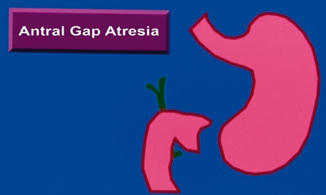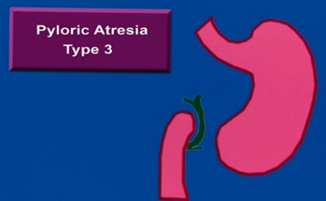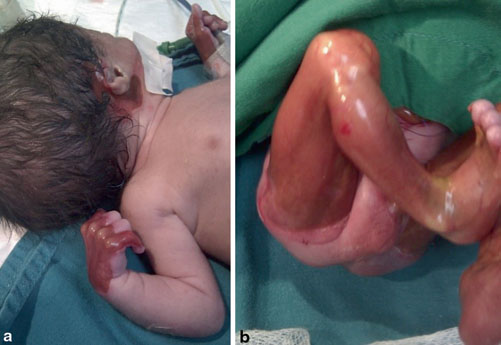Fig. 19.1
Diagrammatic representation of antral membrane (a) and antral membrane forming a windsock (b)
Rarely, there is an antral atresia with a gap (Fig. 19.2).

Fig. 19.2
Diagrammatic representation of antral gap atresia
Pyloric atresia is divided into three types:
Type 1: Pyloric atresia with a membrane (Fig. 19.3a)

Fig. 19.3
a and b Diagrammatic representation of types 1and 2 pyloric atresia
Type 2: Pyloric atresia with a solid cord between the two ends (Fig. 19.3b)
Type 3: Pyloric atresia with a gap between the stomach and duodenum (Fig. 19.4)

Fig. 19.4
Diagrammatic representation of type 3 pyloric atresia
Type 1 is the commonest.
Associated Anomalies
Epidermolysisbullosa (Fig. 19.5; the association of CPA with EB should not preclude surgical treatment).

Fig. 19.5
a and b Clinical photograph showing aplasia cutis congenita and epidermolysisbullosa in a patient with congenital pyloric atresia
ACC.
Hereditary multiple intestinal atresia (HMIA) .
CPA in association with HMIA is universally fatal as so far none of the reported cases survived.
Recently, a combined immunodeficiency syndrome was reported in patients with HMIA.
Presentation
Recurrent nonbilious vomiting in a newborn.
Stay updated, free articles. Join our Telegram channel

Full access? Get Clinical Tree


